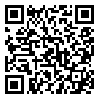Wed, Dec 31, 2025
[Archive]
Volume 38, Issue 1 (1-2024)
Med J Islam Repub Iran 2024 |
Back to browse issues page
Download citation:
BibTeX | RIS | EndNote | Medlars | ProCite | Reference Manager | RefWorks
Send citation to:



BibTeX | RIS | EndNote | Medlars | ProCite | Reference Manager | RefWorks
Send citation to:
Imanimoghaddam M, Farzanegan F, Shakeri M T, Soleymani F, Jamali Paghaleh Z. Ultrasonographic Evaluation of the Masseter Muscle in Skeletal Malocclusions (Class I, II, and III). Med J Islam Repub Iran 2024; 38 (1) :683-690
URL: http://mjiri.iums.ac.ir/article-1-9240-en.html
URL: http://mjiri.iums.ac.ir/article-1-9240-en.html
Mahrokh Imanimoghaddam 

 , Fahimeh Farzanegan
, Fahimeh Farzanegan 

 , Mohammad Taghi Shakeri
, Mohammad Taghi Shakeri 

 , Farzaneh Soleymani
, Farzaneh Soleymani 

 , Zahra Jamali Paghaleh
, Zahra Jamali Paghaleh 




 , Fahimeh Farzanegan
, Fahimeh Farzanegan 

 , Mohammad Taghi Shakeri
, Mohammad Taghi Shakeri 

 , Farzaneh Soleymani
, Farzaneh Soleymani 

 , Zahra Jamali Paghaleh
, Zahra Jamali Paghaleh 


Department of Oral and Maxillofacial Radiology, School of Dentistry, Mashhad University of Medical Sciences, Mashhad, Iran , JamaliZ4011@mums.ac.ir
Abstract: (1180 Views)
Background: There is limited research on the sonographic view of people with skeletal malocclusions. Therefore, this study aimed to evaluate the sonographic findings of the masseter muscle in patients with skeletal malocclusions.
Methods: In this descriptive study, 48 patients aged 15-20 years with skeletal class I, II, and III malocclusions (n = 16) who were referred to Mashhad Dental School for treatment were selected. The masseter muscle was evaluated by ultrasound, including transverse and longitudinal scans on both sides of the face in resting and contraction states. The age, gender, muscle thickness, muscle pattern (Malocclusion were classified based on A-point, nasion, B-point (ANB): 0< ANB <4 as class I, ANB > 4 as class II, ANB < 0 as class III), side of chewing, and body mass index (BMI) parameters were measured for each patient. Paired t-tests compared masseter muscle states; ANOVA assessed differences among malocclusion groups.
Results: The most commonly observed pattern in the masseter muscle of patients with class III skeletal malocclusions was type II, and in people with class II malocclusions was type I. There was a positive and significant correlation between the thickness of masseter muscle and BMI in each group separately (P < 0.001). However, the masseter muscle pattern did not show a significant correlation with BMI, gender, and age. A significant difference was observed between the thickness of the masseter muscle in the resting and contracted states in each group (P < 0.001).
Conclusion: This study showed that skeletal malocclusions can affect the pattern and internal structure of the masseter muscle in the anterior-posterior dimension of the face. Ultrasound can be a suitable diagnostic tool for these patients.
Methods: In this descriptive study, 48 patients aged 15-20 years with skeletal class I, II, and III malocclusions (n = 16) who were referred to Mashhad Dental School for treatment were selected. The masseter muscle was evaluated by ultrasound, including transverse and longitudinal scans on both sides of the face in resting and contraction states. The age, gender, muscle thickness, muscle pattern (Malocclusion were classified based on A-point, nasion, B-point (ANB): 0< ANB <4 as class I, ANB > 4 as class II, ANB < 0 as class III), side of chewing, and body mass index (BMI) parameters were measured for each patient. Paired t-tests compared masseter muscle states; ANOVA assessed differences among malocclusion groups.
Results: The most commonly observed pattern in the masseter muscle of patients with class III skeletal malocclusions was type II, and in people with class II malocclusions was type I. There was a positive and significant correlation between the thickness of masseter muscle and BMI in each group separately (P < 0.001). However, the masseter muscle pattern did not show a significant correlation with BMI, gender, and age. A significant difference was observed between the thickness of the masseter muscle in the resting and contracted states in each group (P < 0.001).
Conclusion: This study showed that skeletal malocclusions can affect the pattern and internal structure of the masseter muscle in the anterior-posterior dimension of the face. Ultrasound can be a suitable diagnostic tool for these patients.
Type of Study: Original Research |
Subject:
Radiology
Send email to the article author
| Rights and permissions | |
 |
This work is licensed under a Creative Commons Attribution-NonCommercial 4.0 International License. |





